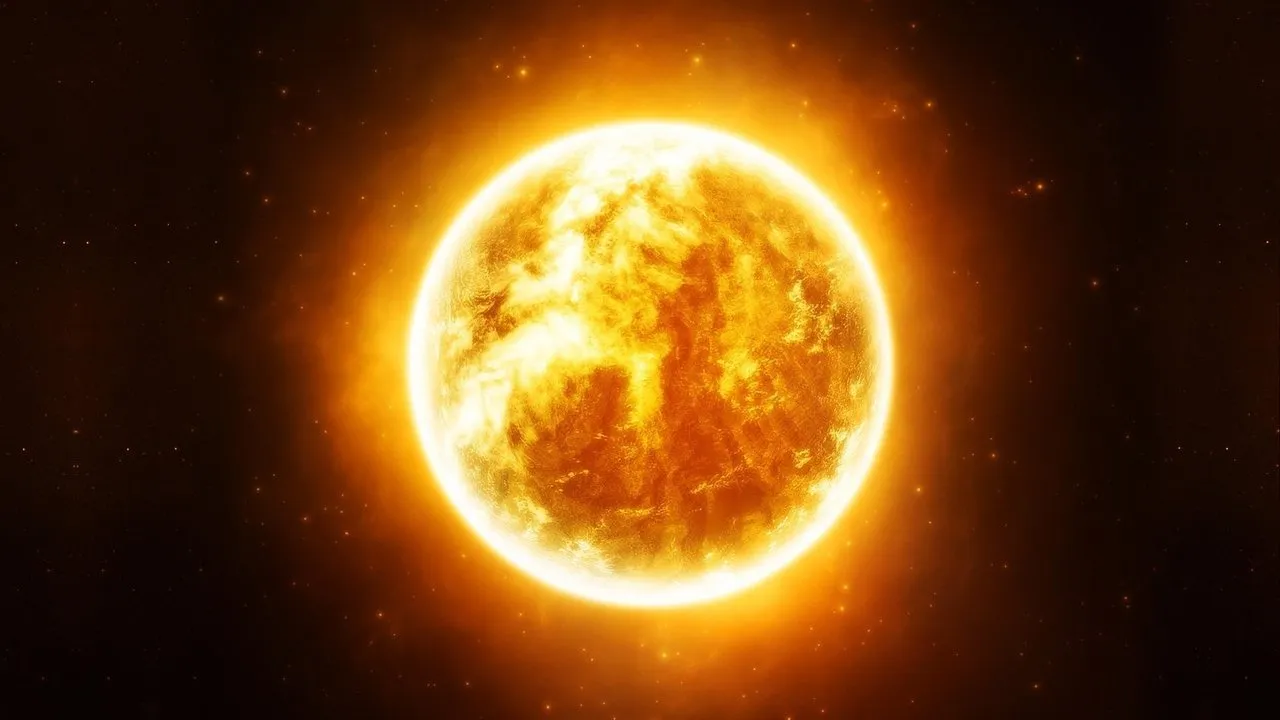The radiation zone is followed by the convection zone. At the border the temperature is still about two million degrees. The energy in this zone is no longer emitted by radiation but transported by electricity. Hot material rises into huge gas cushions, the convection cells, to the outside, cools down there and sinks again into the sun's interior. Since the freshly ascended plasma is hotter and brighter than the descending plasma, these convection cells are visible.
From close up, the surface of our sun appears granular and banished, because such gas cushions constantly ascend and descend. Above the convection zone lies the Photosphere, the source of solar radiation, a 300 to 400 kilometer thick layer with a temperature at the surface of about 5700 degrees. The Photosphere is considered to be the actual solar surface, although our central star has no sharp outer boundary.
Above the Photosphere the Chromosphere extends, in general they are irradiated, but can be seen as a reddish glow for a few seconds during solar eclipses. The temperature increases here to over 10,000 degrees.
This is followed by the Corona, a very thinned out layer, which extends outwards up to two solar radii. This Corona is heated by solar radiation and shock waves to temperatures of up to two million degrees. At every total solar eclipse it is visible as a wreath of rays. The word Corona comes from the Latin and means crown.
Nothing lasts forever, not even our sun. Time will come when the engine starts stuttering and breaks down. But our sun will not simply go out. Before it dies, it will blossom again and shine as a red giant, before a white dwarf marks the end of our central star like a gravestone.
But if the sun constantly burns hydrogen in the core, then at some point the oven will be out. That will happen, but not until a few billion years from now. Our sun is at an age of 4 6 billion years in the prime of its life, it is estimated to be 11 billion years old before its end.
But already in 900 million years it will become critical for life on earth, because the engine, i.e. the nuclear fusion inside the sun, slowly moves further and further out, the temperature of our central star rises slightly. At the age of 55 billion years, i.e. 900 million years, the mean temperature on the earth's surface exceeds the critical value of 30 degrees Celsius for higher organisms.

 Part 2
Part 2 

 Part 4
Part 4 

